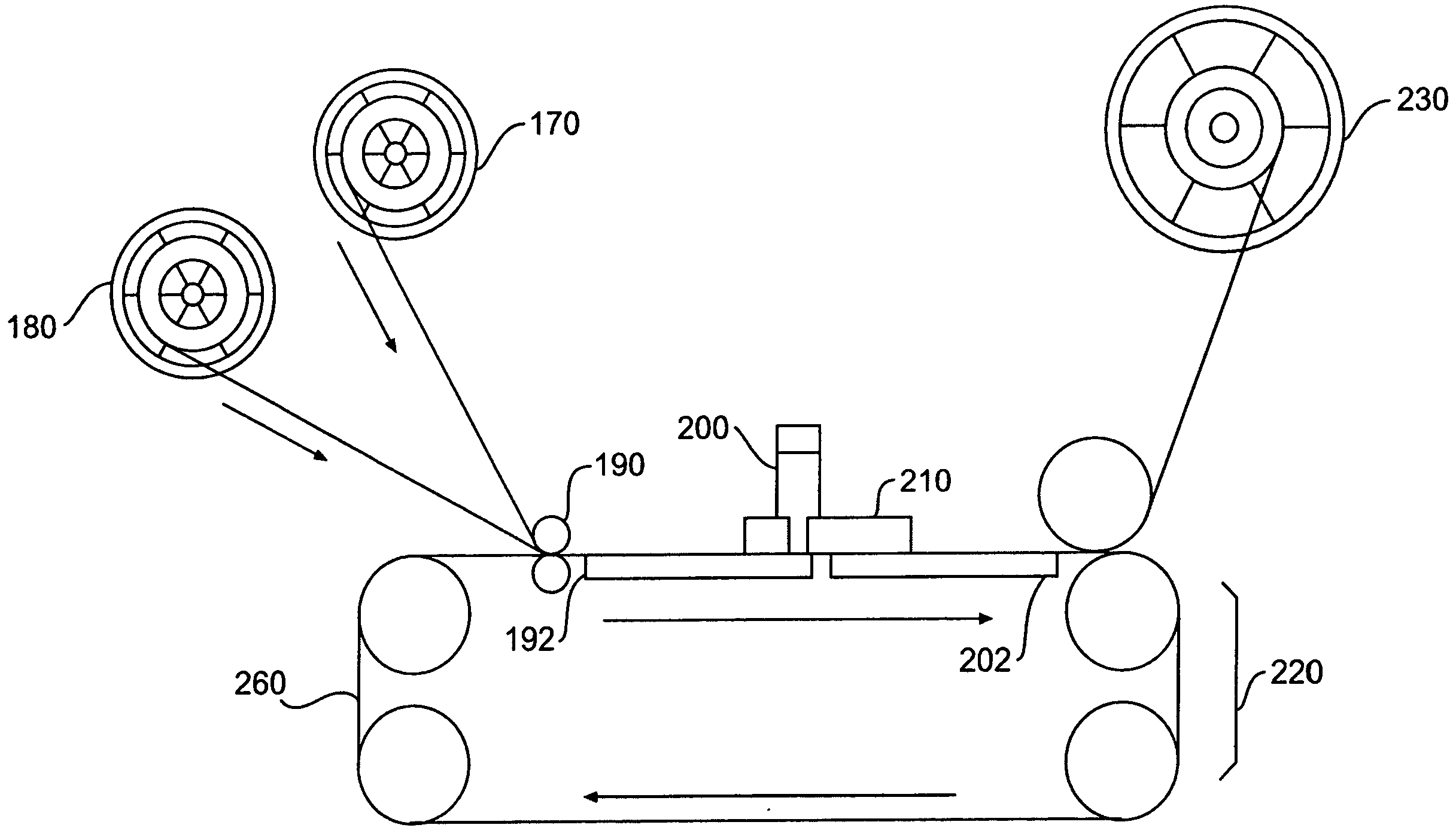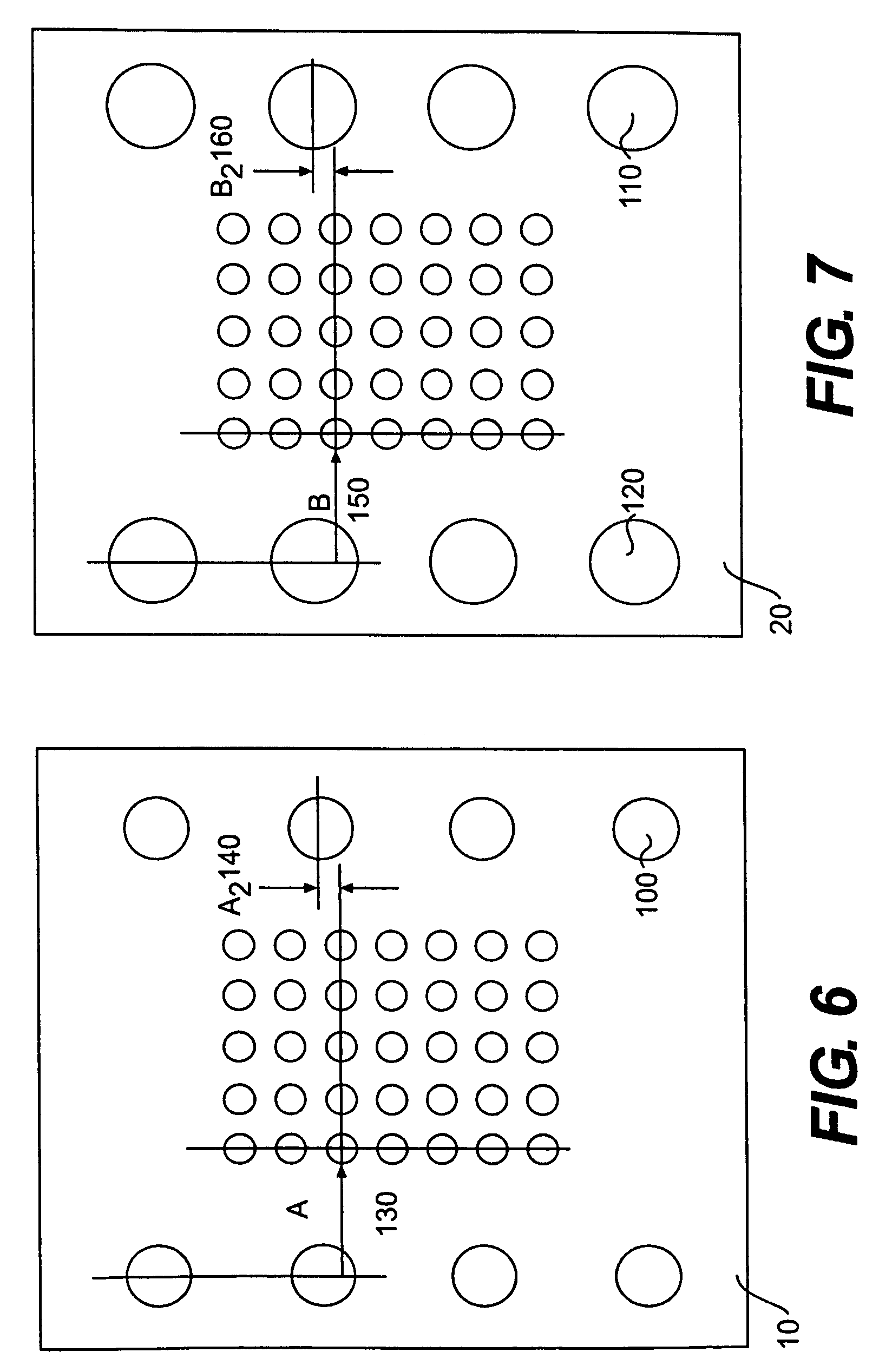Sprocket opening alignment process and apparatus for multilayer solder decal
a multi-layer solder decal and socket opening technology, applied in non-electric welding apparatus, resistive material coating, solid-state devices, etc., can solve problems such as affecting reliability, new challenges in the area of solder on organic substrates, and difficulty in applying solder paste in sufficient volumes for ever smaller pitches
- Summary
- Abstract
- Description
- Claims
- Application Information
AI Technical Summary
Benefits of technology
Problems solved by technology
Method used
Image
Examples
Embodiment Construction
[0025]We disclose the following detailed embodiments of the present invention as examples of the invention which can be embodied in various forms. These specific structural and functional details comprise a basis for the claims and a basis for teaching one skilled in the art to employ the present invention in any appropriately detailed process or structure. We also employ the terms and phrases of this disclosure to provide an understandable description of the invention.
[0026]To achieve these and other advantages, and in accordance with the purpose as embodied and broadly described herein we provide a process and apparatus for aligning a plurality of layers comprising at least two layers that can be positioned in an abutting relationship with each other comprising forming a plurality of sprocket openings in each of the layers for receiving a sprocket of diminishing diameters as the sprocket extends outwardly from a base, with the center axes of the sprocket openings in each layer bei...
PUM
| Property | Measurement | Unit |
|---|---|---|
| diameters | aaaaa | aaaaa |
| diameter | aaaaa | aaaaa |
| area | aaaaa | aaaaa |
Abstract
Description
Claims
Application Information
 Login to View More
Login to View More - R&D
- Intellectual Property
- Life Sciences
- Materials
- Tech Scout
- Unparalleled Data Quality
- Higher Quality Content
- 60% Fewer Hallucinations
Browse by: Latest US Patents, China's latest patents, Technical Efficacy Thesaurus, Application Domain, Technology Topic, Popular Technical Reports.
© 2025 PatSnap. All rights reserved.Legal|Privacy policy|Modern Slavery Act Transparency Statement|Sitemap|About US| Contact US: help@patsnap.com



